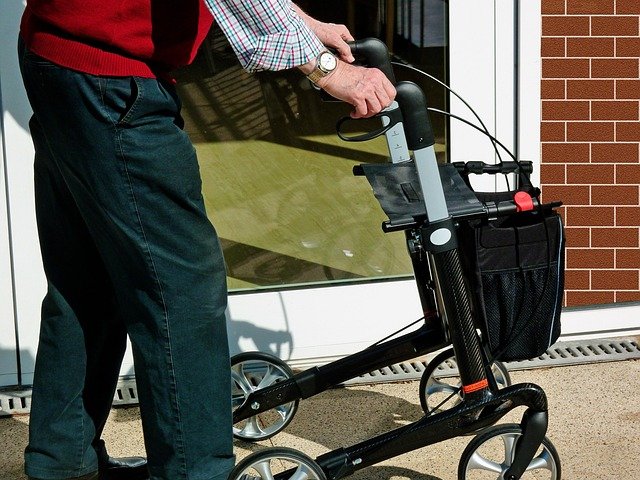Quality Two-Bedroom Senior Living
When it comes to choosing a senior living community, quality is key. If you are in the market for a two-bedroom option, you are likely looking for comfort, security, and a fulfilling lifestyle. Let’s explore what makes a quality two-bedroom senior living community and what factors to consider before making a decision.

What Are the Key Features of Senior-Friendly Design in Living Spaces?
Senior-friendly design prioritises safety, accessibility, and comfort throughout the living environment. Two-bedroom units typically feature wider doorways to accommodate mobility aids, step-free entrances, and well-lit pathways. Bathrooms include grab bars, walk-in showers with non-slip surfaces, and raised toilet seats for enhanced safety. Kitchen areas incorporate lower countertops, easy-reach storage solutions, and lever-style handles that require minimal grip strength. Flooring materials are chosen for their slip-resistant properties, while colour contrast is used strategically to help residents with vision changes navigate their spaces more easily. Emergency call systems are discreetly integrated throughout the unit, providing peace of mind for both residents and their families.
How Do Senior Living Communities Foster Socialisation Opportunities?
Quality senior living communities create numerous opportunities for residents to connect and build meaningful relationships. Common areas are strategically designed to encourage interaction, including libraries, game rooms, and comfortable seating areas. Regularly scheduled activities such as book clubs, art classes, musical performances, and educational seminars provide structured social engagement. Many communities maintain gardens where residents can collaborate on growing flowers or vegetables, fostering both social connections and physical activity. Dining facilities often feature communal seating arrangements that naturally encourage conversation during meals. Some communities also facilitate intergenerational programmes, connecting residents with local schools or youth groups for mutually enriching experiences.
What Types of Health and Wellness Programmes Are Offered?
Comprehensive health and wellness programmes form the cornerstone of quality senior living communities. Fitness centres equipped with senior-appropriate exercise equipment support physical wellbeing, while qualified instructors lead activities like water aerobics, tai chi, and gentle yoga. Many communities employ physiotherapists who provide individualised exercise programmes and mobility assistance. Mental health support includes counselling services, support groups, and cognitive stimulation activities designed to maintain mental acuity. Nutritional programmes ensure residents receive balanced meals tailored to dietary restrictions and preferences. Regular health screenings, medication management support, and wellness workshops on topics like fall prevention and chronic disease management help residents maintain optimal health outcomes.
What Professional Care Services Are Typically Available?
Professional care services in senior living communities are designed to support residents while respecting their independence. Registered nurses are typically available on-site or on-call to address health concerns and coordinate with residents’ healthcare providers. Personal care assistance may include help with bathing, dressing, medication reminders, and mobility support, with services tailored to individual needs. Housekeeping and laundry services help residents maintain their living spaces without physical strain. Many communities provide care coordination services, helping residents navigate healthcare appointments and communicate with family members about health updates. Memory care support may be available for residents experiencing cognitive changes, with specially trained staff providing appropriate interventions and family support.
How Do Senior Living Communities Address Location and Transportation Needs?
Strategic location planning ensures senior living communities provide convenient access to essential services and recreational opportunities. Many communities are situated near medical facilities, shopping centres, and cultural attractions to reduce travel distances. Scheduled transportation services typically operate on regular routes to medical appointments, grocery stores, pharmacies, and local points of interest. Some communities maintain their own vehicle fleets with drivers trained to assist seniors with mobility challenges. Public transportation accessibility is often considered during site selection, with communities located near bus routes or train stations where possible. For residents who continue driving, secure parking areas and well-lit pathways to vehicles are standard features. Emergency transportation protocols ensure residents can access urgent medical care when needed.
Quality senior living communities across Australia vary in their pricing structures and available amenities. Understanding the range of options helps families budget appropriately for this significant investment. The following comparison provides insight into typical offerings from established providers in the Australian market.
| Provider | Entry Fee Range | Monthly Fee Range | Key Features |
|---|---|---|---|
| Aveo Group | $200,000 - $800,000 | $1,200 - $2,500 | Resort-style amenities, healthcare partnerships |
| Stockland | $250,000 - $900,000 | $1,500 - $3,000 | Modern facilities, cafe and dining options |
| Regis Aged Care | $150,000 - $600,000 | $1,000 - $2,200 | Integrated care services, memory support |
| Seasons Retirement | $180,000 - $700,000 | $1,300 - $2,800 | Community gardens, wellness programmes |
Prices, rates, or cost estimates mentioned in this article are based on the latest available information but may change over time. Independent research is advised before making financial decisions.
Two-bedroom senior living arrangements offer an ideal balance between independence and support, providing residents with comfortable spaces while accessing comprehensive community services. The combination of thoughtful design, social opportunities, health programmes, professional care, and strategic location planning creates environments where seniors can thrive. As families consider senior living options, evaluating these key components ensures the selected community will support their loved one’s wellbeing and quality of life for years to come.
This article is for informational purposes only and should not be considered medical advice. Please consult a qualified healthcare professional for personalized guidance and treatment.




